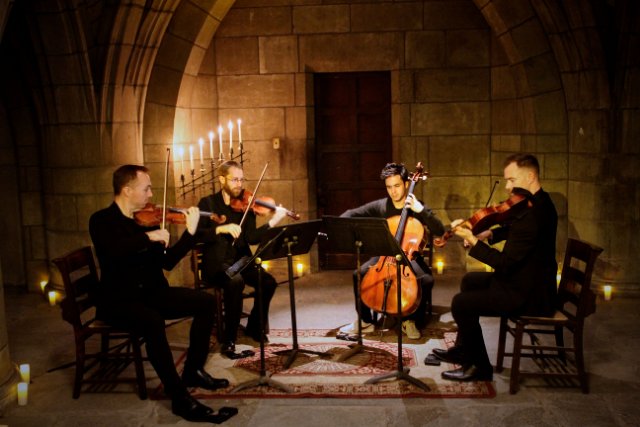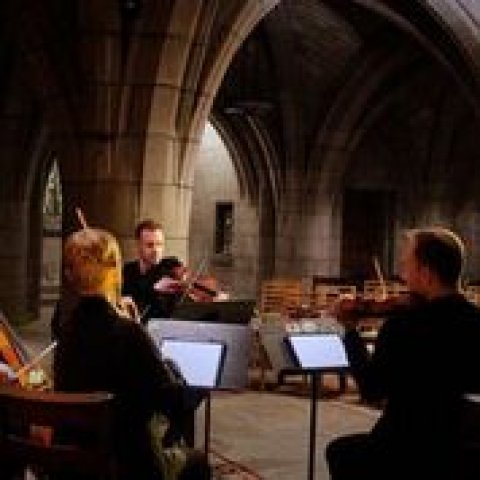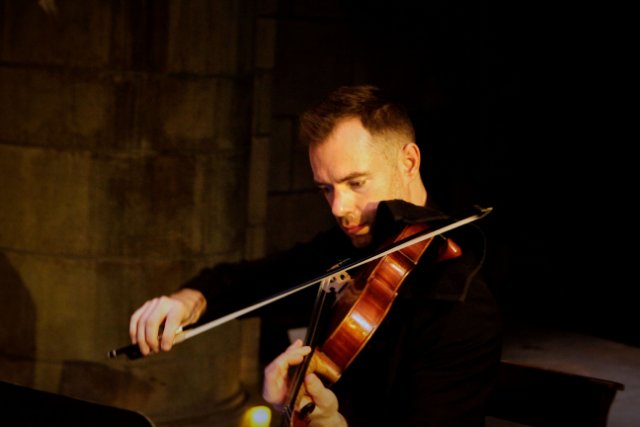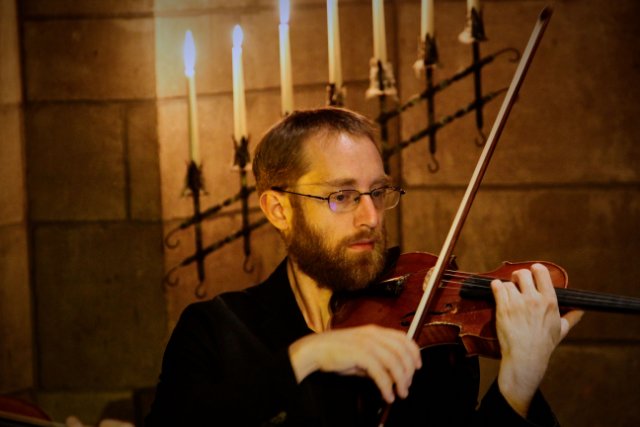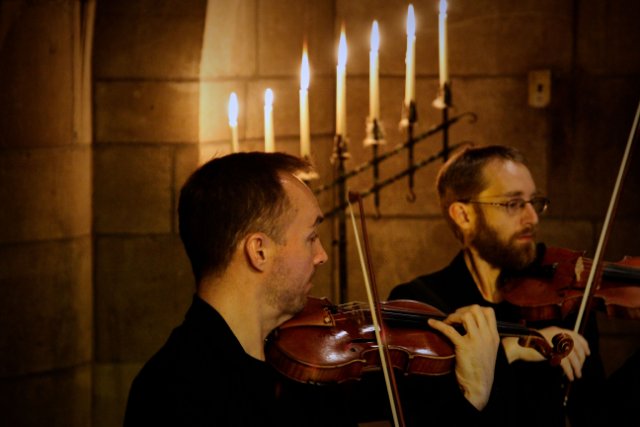The Jack Quartet at a Crypt Session
John Luther Adams Communes
By: Susan Hall - Oct 21, 2019
John Luther Adams
The Wind in High Places String Quartet No. 1
Lines Made by Walking String Quartet No. 5 New York Premiere
The Jack Quartet
Christopher Otto and Austin Wulliman, violinists
John Pickford Richards, violist
Jay Campbell, cello
The Crypt Sessions
Church of the Intercession
New York, New York
October 21, 2019
Photo credits: Andrew Ousley
Andrew Ousley produces haunting evenings in the Crypt of the Church of the Intercession in upper Manhattan. He brings magical performers to the Harlem church to join us in communion. This evening's performance featured two works of John Luther Adams, a political environmentalist turned environmental composer. The natural world about us is the composer's subject. His music colors performance spaces with the feelings and sounds of wind, waves and mountains.
The Wind in High Places offers up stringed instruments for the wind to play. The Jack Quartet performers deny any intervention. This is how the wind sounds. It is brought forward as the work progresses, coming closer and closer to us. Evocative movements are titled Above Sunset Pass, Maclaren Summit, Looking Toward Hope.
Lines Made by Walking may be a take off from "walking the line." If the wind has blown through the Quartet's instruments causes random sounds in the Quartet No. 1, the deliberate human step is heard in No. 5. It is the human footprint that is drawing the lines, not following them.
A member of the Quartet explains that each movement represents part of a climb. Like "The Bear Went Over the Mountain," we hear the climb begin. Cellist Jay Campbell reports that when the composer first heard the Quartet play the first movement, he immediately doubled the time. Steps quickened.
Fascinating lines which on the surface appear like counterpuntal entrances, in fact weave together, creating rich and often odd textures. The phrases on which each of the three sections are based are often repeated, but of different lengths. Four notes, then five, and finally seven notes create the feeling of steps' rhythms expanding. Notes are held by one instrument or another. Decorations appear in seemingly random formation.
The Jack has a unique ability to explore the textures of their instruments, bending them to desired tones which bows seldom produce. One started to hear what could have been a flute or vibraphone emerging from the group. No other instrumentalist had entered. The artists were drawing forth this pure sound from strings and wood. The Quartet ends on two notes, jammed close together, unresolved and yet completely satisfying.
The period of star performers who can do what they will with a composer's work is just about over. Again the composer and the performing artists wrestle with the notions of pre-imagined sounds, and how they are realized live. Notes stressed in the author's mind may not need to be played any more loudly. An accent stressed in the realm of the imagination may not always be transferred adequately to performance. Adams works out a piece in his mind and then goes back and forth with The Jack who interpret, making the work real in process trial performances. An important live step is taken between the mind's ear and the real sounds in concert.
In The Crypt, composer and performing artists collaborate. Selections of a talented impresario invite artists and audience to enter special moments together. Sounds reverberate from stone as candles cast warm light. Moments nourish the soul to spread and re-capture the precious environment for which composer John Luther Adams has always fought. Adams now focuses on the power of music to transform. In the bows and string of the Jack Quartet, it does.

